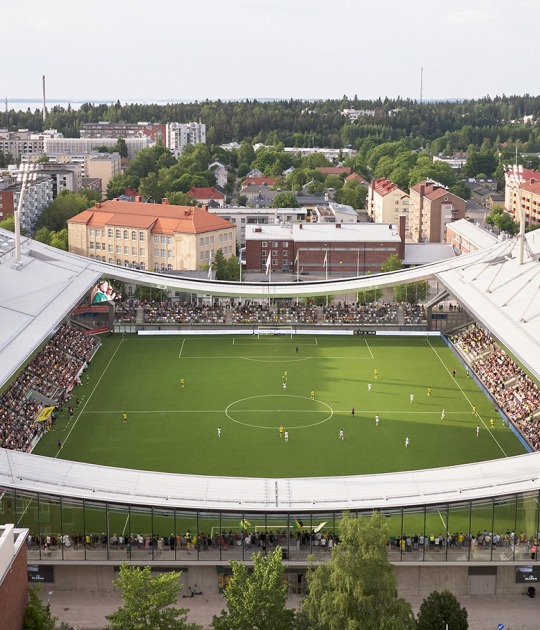Led by Director Pedro Gadanho and commissioned by the EDP Foundation, the Museum of Art, Architecture and Technology (MAAT) will explore contemporary culture through visual arts, new media, architecture, technology and science.
MAAT will be the focal point of the EDP Foundation Campus site on the River Tagus in the district of Belém, at the heart of an exciting urban revitalisation along one of Lisbon’s most historic waterfronts. Housed within two buildings on a 3.8 hectare site, MAAT comprises the elegant new kunsthalle structure and the recently renovated Central Tejo power station.
Description of project by AL_A
MAAT is an outward-looking museum located on the banks of the Tagus in Belém, the district from where the Portuguese great explorers set off. Proposing a new relationship with the river and the wider world, the kunsthalle is a powerful yet sensitive and low-slung building that explores the convergence of contemporary art, architecture and technology.
The new building is the centrepiece of EDP Foundation’s masterplan for an art campus that includes the repurposed Central Tejo power station.
Blending structure into landscape, the kunsthalle is designed to allow visitors to walk over, under and through the building that sits beneath a gently expressed arch – one of the oldest forms in western architecture.
The roof becomes an outdoor room, a physical and conceptual reconnection of the river to the city’s heart – where visitors can turn away from the river and enjoy the vista of the cityscape, and at night, watch a film with Lisbon as a backdrop.
Below, the exhibition spaces are extensions of the public realm, with flowing interconnected places for experiences and interactions at the intersection of the three disciplines. These spaces complement the galleries of the converted Central Tejo building.
Building on Portugal’s rich tradition of craft and ceramics, three-dimensional crackle glazed tiles articulate the façade and produce a complex surface that gives mutable readings of water, light and shadow. The overhanging roof that creates welcome shade is used to bounce sunlight off the water and into the building.
Architectural form
The architectural design draws on the context of the site, creating both physical and conceptual connections to the waterfront and back to the heart of the city. The building creates four exhibition spaces beneath a gracefully undulating roof, conceived to create a new public space above the galleries. AL_A’s low-slung response exploits the natural assets of the site, framing an architectural narrative that is sensitive to both its cultural heritage and the future of the city. Blending structure into landscape, the kunsthalle is designed to allow people to walk over, under and through the building that sits beneath a gently expressed arch – one of the oldest forms in western architecture – as well as access the city via a new footbridge over the railway tracks and along the riverside walk. Maintaining a very real connection to the history of the site, the electricity substation and transformers needed to supply the local community continue to operate on the western edge, embraced by the sweeping design of the building.
Galleries and internal spaces
The exhibition spaces are conceived as extensions of the public realm, with flowing interconnected places for experiences and interactions at the intersection of the three disciplines. These spaces complement the galleries of the converted Central Tejo building. At the centre of the kunsthalle is the Oval Gallery, a 1,200m2 space reached along a sweeping curve that merges circulation with exhibition. Surrounding it are the Main Gallery, a 1,000m2 flexible space, and the Project Room and Video Room, two smaller spaces for installations or projections. Each is a unique space in response to the distinct vision of MAAT, with the flexibility to adapt and change over time. They are born out of a changing relationship between art and visitors, the growing importance of interaction and performance, and the emergence of a less didactic relationship between museum and public. The Museum is a space to capture the imagination of the public and artists alike, as Dominique Gonzalez-Foerster has been inspired for MAAT’s unique galleries for her opening exhibition, Pynchon Park (Utopia/Dystopia).
Public spaces
Public space is as important in today’s museum as the galleries themselves and MAAT incorporates over 7,000m² of new public space. The roof is conceived as a public space and an outdoor room of the museum, a physical and conceptual connection to the city’s heart. By day, it is a place to meet with panoramic views across the river, while at night the focus shifts and it becomes an outdoor cinema where visitors can watch a movie against the romantic backdrop of historic Lisbon. Another vital public place is created along the riverfront, with the cantilevered roof forming an area of welcome shade. At high tide, a series of steps leading down from the museum to the water’s edge are submerged, creating a permeable threshold that changes with the tide.
Façade and materiality
The building’s textured façade is composed of almost 15,000 three-dimensional crackle-glazed tiles manufactured by Ceràmica Cumella. Building on Lisbon’s rich tradition of craft, the complex surface is a contemporary expression of this characteristic Portuguese building material and continues AL_A’s ongoing research into new uses and reinterpretations of ceramics. The tiles capture the changing light and give mutable readings of the exceptional southern light that vary with the time of day and the seasons. The waterfront context is so essential to the project that the design has found a way to reflect this - literally – onto the floor of the Main Gallery. The overhanging roof that creates welcome shade is used to bounce sunlight off the water and into the building.
























































